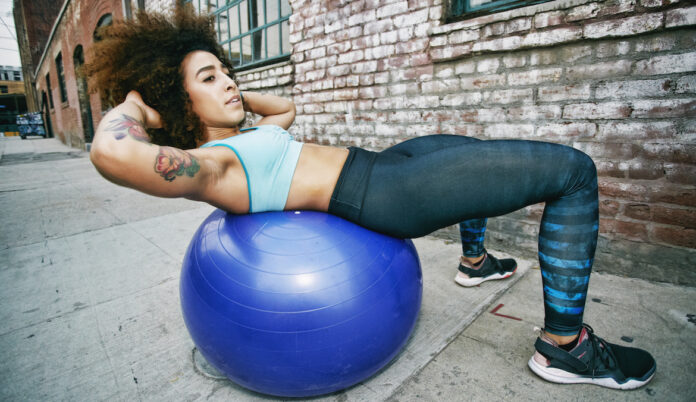Because by simply bending the knees and lowering your hips toward the floor, you can fire up the gluteal complex, hamstrings, hip flexors, calves, and abdominals all at once. And if you up the ante and pick up a barbell for overhead squats or back squats, the shoulders are also engaged. There are so many different types of squats.
But for those of us who can’t squat, what are we supposed to do?
Whenever I attend a group fitness session in which squats play a central role, I find myself on a roller coaster of emotions. It’s frustrating that I can’t squat like I used to. There are times when I feel completely alone and abandoned. But I take a deep breath and remind myself that this workout is also for me.
My fitness life was not always so limited. I am a former professional dancer, NASM-certified personal trainer, and long-time group fitness instructor.
In 2009, I was hit and run over by a bus. My right leg was crushed and nearly amputated. All the bones in the other leg were severely broken. The skin was destroyed from tire burn. After months in the burn ICU, my right leg was literally rebuilt. I have new skin from my ankle to my inner thigh. My back muscles were transplanted into my leg to support blood flow, and bone from my right hip was grated into my left leg so I would be able to walk.
I used my dance and fitness experience to figure out how to walk and move again in my newly-rebuilt body. Still, there was a lot of trial and error. There has also been a lot of acceptance of what I can and cannot do—including the ever-present squat exercise.
And yet, as a fitness instructor focusing on post-traumatic growth, my patience is wearing thin as I endlessly watch squat-based fitness videos online. Frequently, I find myself shouting at my phone, “What about me?”
I know I’m not alone. So I put together a few alternatives that strengthen the same muscles as squatting which I can whip out when everyone else starts doing squats, whether I’m at home or at the gym.
Three alternatives to squats
Ball bridges:
- Lie with your back on the floor and your feet hip-width apart on the top of a physio ball or a chair.
- Lift the pelvis up into a bridge and hold for five seconds. Be sure to engage the core: Imagine pulling the ribcage together and contracting the abs.
- Repeat for eight to 10 reps.
First progression: At the top of the bridge, straighten your legs to roll the ball away from the hips and then back to neutral.
Second progression: Lift the arms straight up throughout the exercise. This will encourage more core engagement.
Third progression: Bridge with one leg straight up in the air. (Just remember to then switch sides.)
Seated front leg raise:
- Sitting on a physio ball, elevate one leg straight out 90 degrees from the hip. Hold for five seconds. The unstable surface of the ball engages both the working leg’s quads and the core. Keep your spine in a neutral position.
- Do 12 to 20 reps of this isometric exercise for hip flexor and quad strength without any pressure on the knee joint.
Variation: If balance is an issue, sit on the edge of a chair or step instead of a ball.
Hip thrusts:
This is one of my favorites for building strength in the glutes and hamstrings.
- Rest your elbows and forearms behind you on a workout bench or chair. Feet are hip-width apart, firmly on the floor, with toes pointed straight forward. Hips are lifted in line with the bench. The knees are at a 90-degree bend.
- Slowly let the hips drop as close to the floor as possible with the feet still firmly on the ground.
- Lift the hips back up in a count of four.
- Squeeze the glutes to the top for five seconds and rest.
- Repeat for one to three sets of eight to 12 reps.
First progression: Place a weight or body bar on the top of your pelvis. Be sure to keep your core engaged to support the pelvis.
Second progression: Extend one leg straight out on the ground. Keep the second foot straight on the floor, with the knee at a 90-degree bend. Drop the pelvis from this position. Be sure to keep the hips square and the abs engaged. Remember to switch legs after one to three sets.
Watch the author demonstrate each of these moves:

